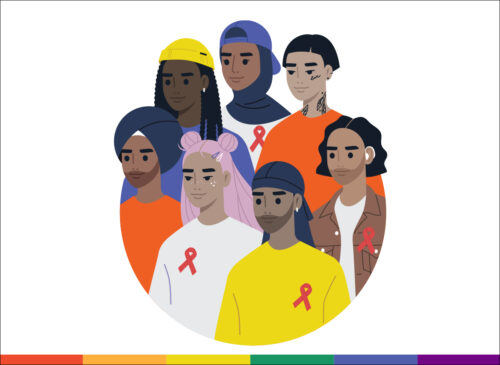On April 16, Canadians — and internet users around the world — have the opportunity to participate in “Indigenous Canada,” a Massive Open Online Course (MOOC) offered through the University of Alberta and the Coursera consortium of online learning providers.
Similar courses — for instance on “Reconciliation through Indigenous education” and
“Aboriginal worldviews and education” — are offered by the University of British Columbia and the University of Toronto respectively.
“Indigenization” of the curriculum is an urgent issue in Canadian higher education.
As a non-Indigenous faculty member at Thompson Rivers University, I make no claims to speak for, or about, Indigenous communities. I specialize in learning technologies, have a strong interest in instructional design and e-learning and my doctoral thesis was on social presence in MOOCs.
My university has made a priority of “Indigenizing” curricula and expressed the desire to be a “university of choice” both for Indigenous students and for open, distance and online education. Given my role as a faculty member is to support learning technologies and instructional design initiatives, I have taken a strong interest in Indigenization programs across Canada.
Indigenous ways of knowing
So what are we talking about when we discuss Indigenization? Camosun College, in their “Inspiring relationships” strategic document provides a useful starting point in this discussion:
“Indigenization is the process by which Indigenous ways of knowing, being, doing and relating are incorporated into educational, organizational, cultural and social structures.”
Of the 94 Calls to Action issued by the Truth and Reconciliation Commission of Canada, seven deal specifically with education while another while another four deal with “education for reconciliation.”
Higher education clearly has a role to play in helping to implement these calls to action — through teacher education programs, and across the entire curriculum.
Within the context of MOOCs — and e-learning generally — there is much potential to align with Indigenization curricular goals. MOOCS, for example, could amplify and extend place-based, problem-based and project-based learning of Indigenous content as well as language revitalization and storytelling.
There could also be great value in bringing Indigenous content to a potentially “massive” audience. In the past, some MOOCs have seen enrollments in the hundreds of thousands.
Didactic teaching methods
The concern is that there is, as yet, little evidence which speaks to good practices for Indigenizing these types of massive online courses.
The question arises of how to incorporate Indigenous ways of knowing, being, doing and relating into the way these courses are designed, delivered and facilitated.
As an instructional designer I am constantly going back to the question: Who are the intended learners? And what are their needs in relation to the content, subject matter and program of study?
While there is still much to learn about who participates in MOOCs and for what purpose, some studies on this topic have shown that MOOC participants tend to be university – or college – educated males in their 20s to 40s. Results from my own doctoral research study are consistent with this profile.
It will be interesting to see what outreach the providers of these Indigenizing courses and their institutional partners will engage in — to reach as diverse a range of learners as possible.
Another concern is that MOOCs offered through Coursera, EdX and other similar providers use relatively didactic, one-way teaching methods. The learning management software, course design and learning outcomes have tended to favour a homogeneous, cognitive-behaviourist approach to teaching and learning — with little interaction between instructor and students, and evaluation and assessment frequently automated.
I am curious to see what variations of the typical “xMOOC” pedagogy and curricular approach may be employed when speaking to and about Indigenous knowledge and world views.
Diluting and distorting complex content
It is also worth mentioning that MOOCs have notoriously low completion rates.
It has been argued that this is not necessarily a bad thing — rather, that participants choose their own learning outcomes and pathways through the courses. Again, my doctoral work is consistent with these findings.
The point is that addressing important content using a format which has a low participation and completion rate runs the risk of diluting and diminishing the content within academic and public discourse.
There is also a risk of speaking so broadly of Indigenous issues that these courses distort the complex diversity of Indigenous experiences in Canada. I will be interested to see how the University of Alberta and University of Toronto speak to the complex plurality of First Nations relationships within their home regions of Ontario and Alberta and across Canada generally.
A surfeit of data
There is also the question of learner analytics. Coursera, Ed.X and their institutional partners collect vast quantities of data on platform users and their pathways through course content. This information can be aggregated and used for a wide range of purposes.
It would be interesting to hear from learning software providers and their institutional partners how their analytics are used, and — from a practical standpoint — how this usage will enhance teaching and learning on the topics addressed.
We are still in the very early days of assessing good practice in Indigenization curricular initiatives vis-à-vis e-learning, distance education and instructional design.
Three of the country’s most respected and high-profile universities are to be commended for bringing Indigenous content to a potentially “massive” audience of learners from around the world.
![]() These efforts, should in turn, lead to valuable lessons in how institutions of higher learning can leverage online learning to improve access to, and quality of, their offerings on Indigenous topics.
These efforts, should in turn, lead to valuable lessons in how institutions of higher learning can leverage online learning to improve access to, and quality of, their offerings on Indigenous topics.
Matthew Stranach, Coordinator, Educational Technologies, Thompson Rivers University
This article was originally published on The Conversation. Read the original article.










